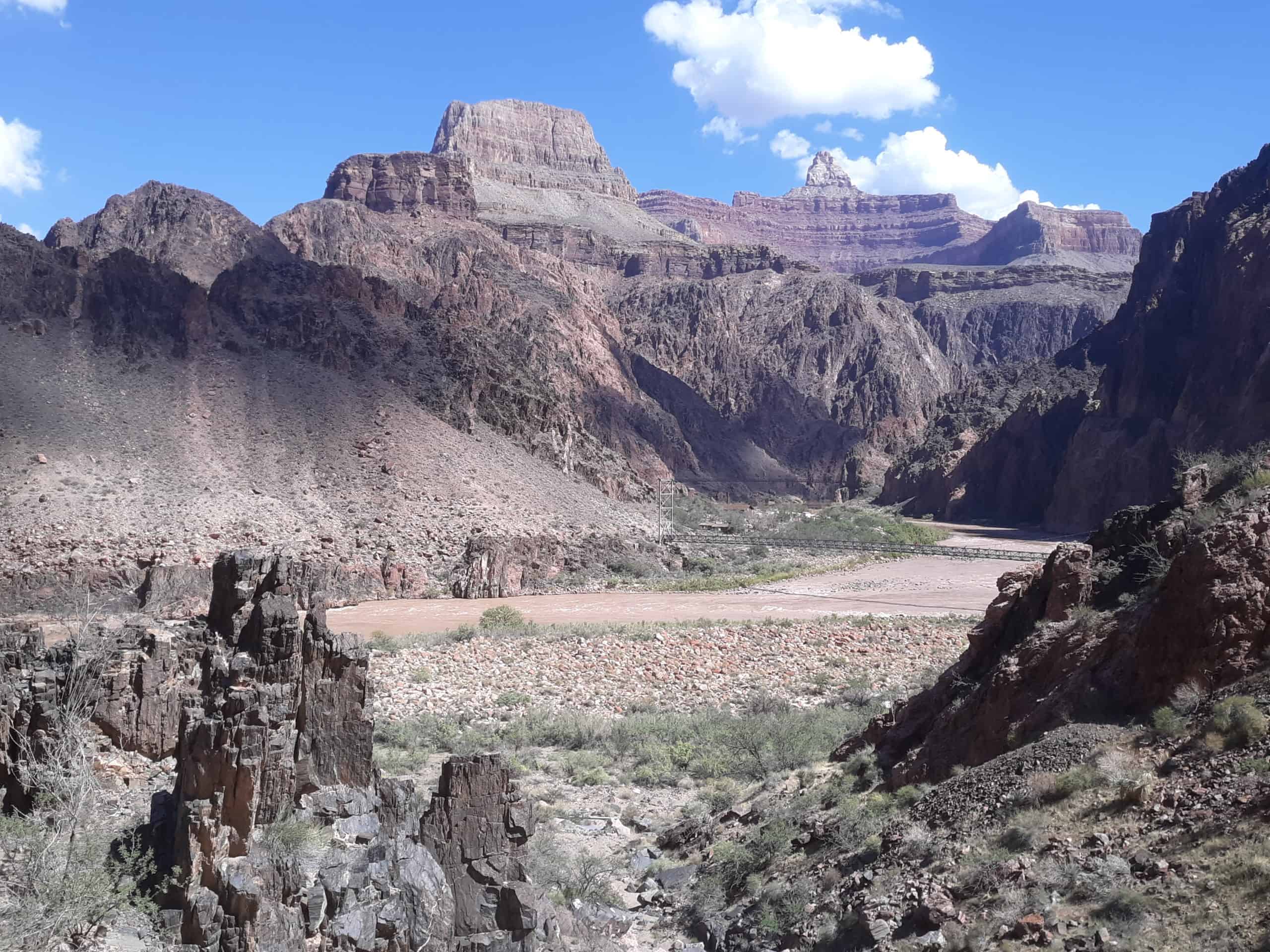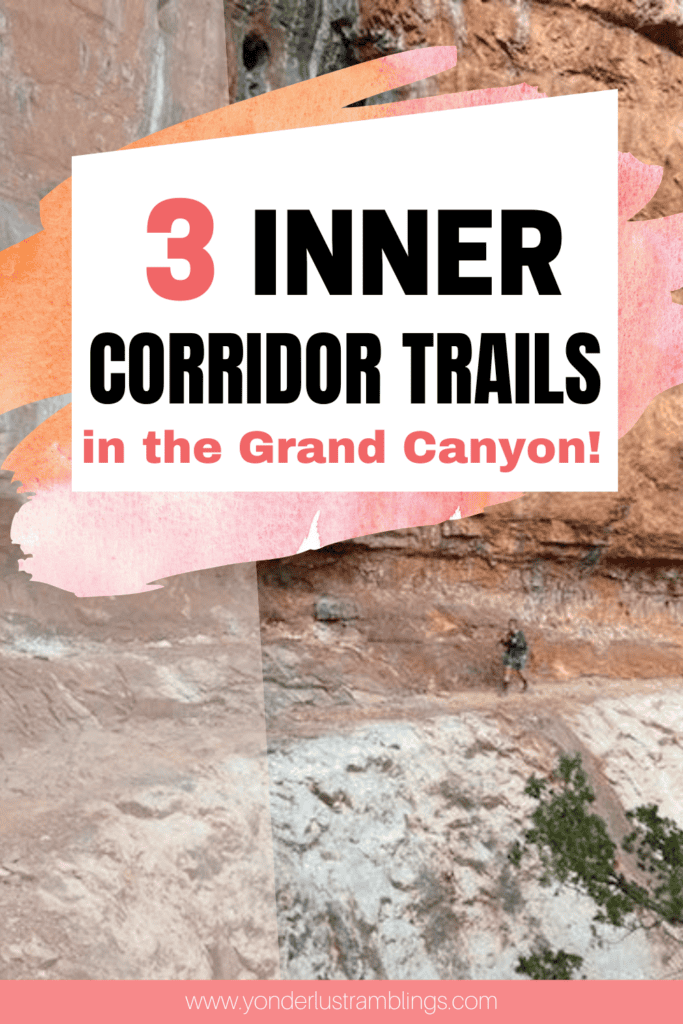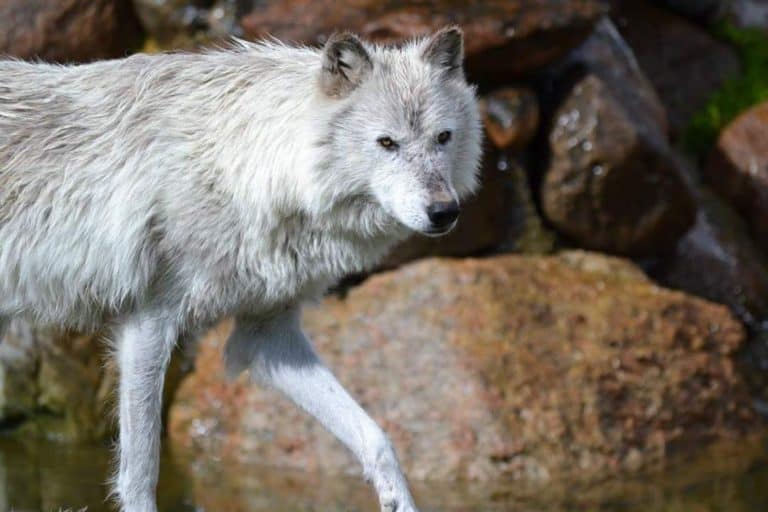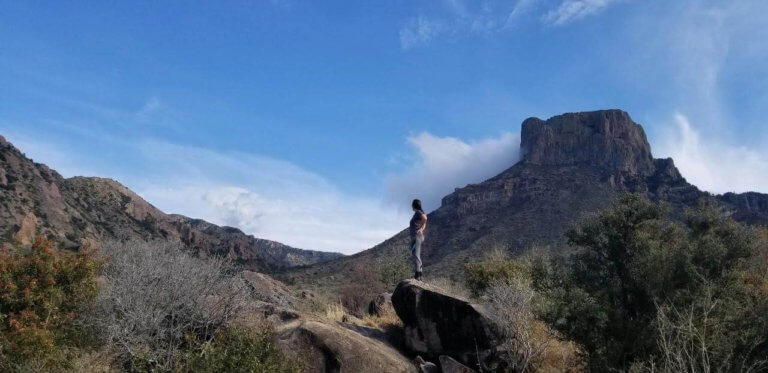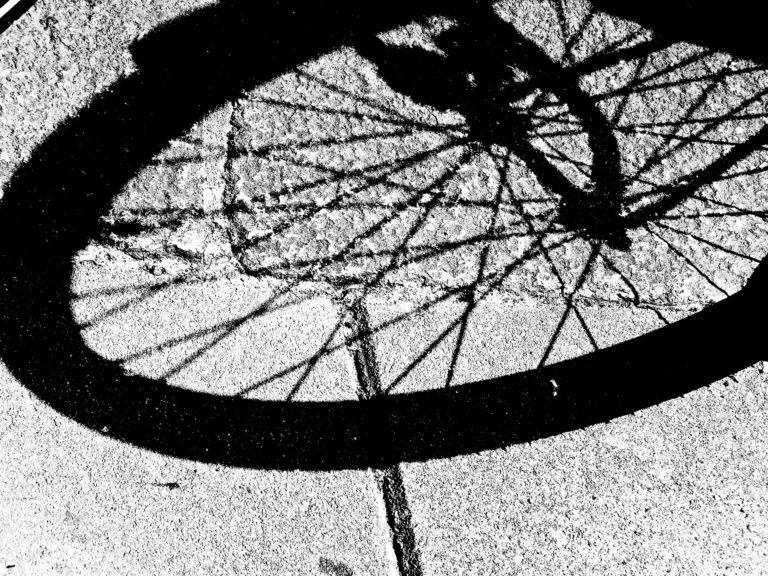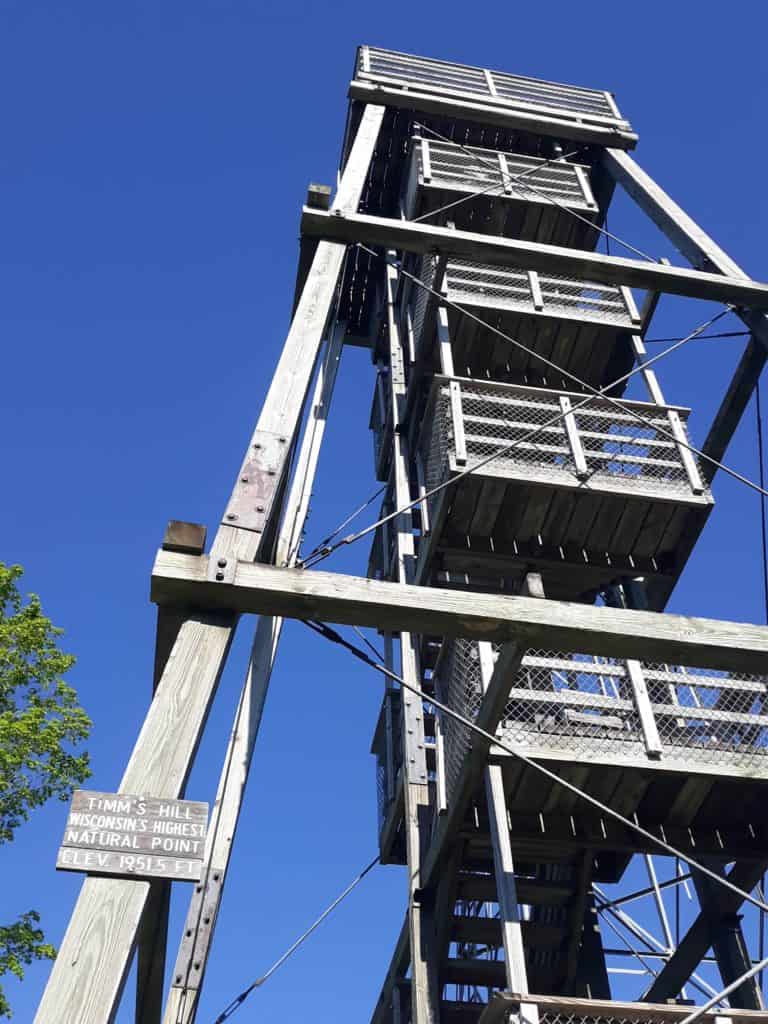The 3 Inner Corridor Trails in Grand Canyon National Park
Why should you care about the 3 inner corridor trails in Grand Canyon National Park? 1) Because they are some of the top trails in the park. 2) They connect to each other and to the two rims in the park, the North Rim and the South Rim. 3) They provide a unique experience and views that are unlike rim trails. 4) You can reach the bottom of the Grand Canyon on inner corridor trails (which only a small, select group of hikers out of the 5 million annual visitors ever reach). Now that you know why, get to know the 3 inner corridor trails of Grand Canyon National Park: the Bright Angel Trail, the South Kaibab Trail, and the North Kaibab Trail.
Disclosure: Below are some affiliate links-these are all products I highly recommend. I won’t make any recommendations on this page that I haven’t tested or personally used! Enjoy this guide to the 3 inner corridor trails in Grand Canyon National Park!
Table of Contents
What are the 3 Inner Corridor Trails in Grand Canyon National Park?
The 3 inner corridor trails in Grand Canyon National Park are:
- The Bright Angel Trail (South Rim)
- The South Kaibab Trail (South Rim)
- The North Kaibab Trail (North Rim)
Location of the 3 Inner Corridor Trails in Grand Canyon National Park
While these 3 inner corridor trails in the Grand Canyon all connect to each other at the bottom of the canyon, their respective trailheads are located separately. As you can see on the map below, the Bright Angel Trailhead is the most centrally located and accessible. Its trailhead is located in Grand Canyon Village on the South Rim. The South Kaibab Trailhead is located on the eastern part of the South Rim, several miles from Grand Canyon Village. The North Kaibab Trailhead is located on the North Rim of the Grand Canyon, an approximate 4.5 – 5 hour drive from the South Rim.
Trailhead locations of the 3 inner corridor trails in Grand Canyon National Park
What Exactly Does the Term “Inner Corridor Trail” Mean?
An inner corridor trail in Grand Canyon National Park descends from the top of the rim down to the bottom of the canyon, where it connects to the other inner corridor trails, thus connecting the North and South Rims via a “corridor” across the chasm.
The 3 inner corridor trails in the Grand Canyon are the Bright Angel Trail (South Rim), the South Kaibab Trail (South Rim), and the North Kaibab Trail (North Rim).
How Do the 3 Inner Corridor Trails in the Grand Canyon Connect to Each Other?
As mentioned above, the cool thing about the 3 inner corridor trails in Grand Canyon National Park is that they all 3 connect to each other at the bottom, in the vicinity of the Colorado River, Bright Angel Campground, and Phantom Ranch.
*The map below shows the trail routes of all 3 inner corridor trails in the Grand Canyon – Bright Angel, South Kaibab, and North Kaibab – and how they clearly connect to each other at the bottom.
Connecting corridor trails in Grand Canyon National Park
Why is this important? Because you can use a connecting combination of these inner corridor trails to hike down and up one rim, or across the entire canyon from North to South or South to North. For example:
- Hiking North Rim to South Rim via the North Kaibab Trail to Bright Angel Trail (known as a “Rim to Rim” hike)
- Hiking South Rim to North Rim via the South Kaibab Trail to North Kaibab Trail (alternative Rim to Rim hike)
- Hiking the South Rim down and up via the South Kaibab Trail to Bright Angel Trail (known as a “Rim to River” hike)

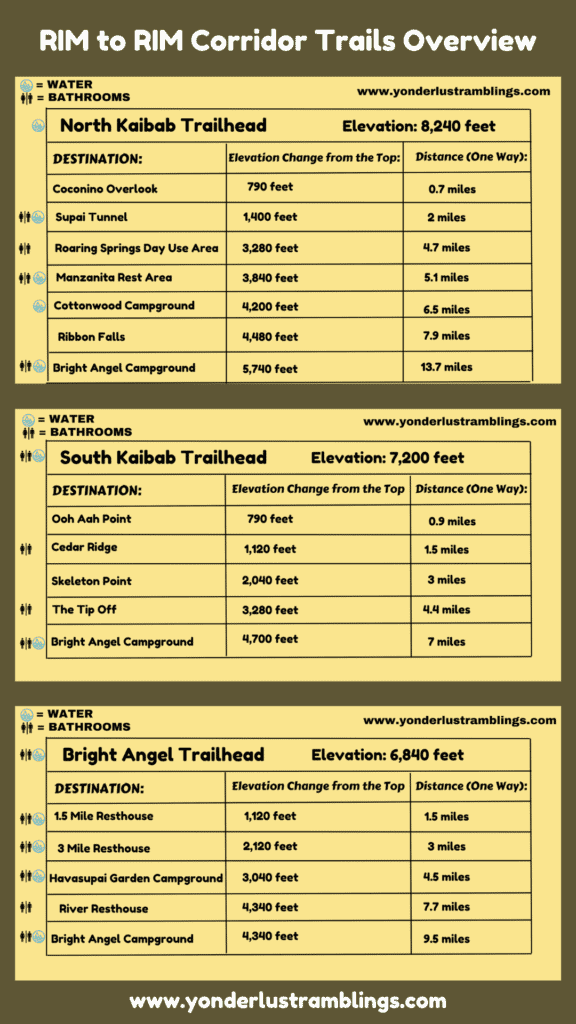
Compare and Contrast the 3 Inner Corridor Trails in Grand Canyon National Park
Below you can find helpful info on getting to know each of the 3 inner corridor trails in the Grand Canyon, including trail descriptions and pictures.
#1: The Bright Angel Trail
The Bright Angel Trail is the most popular and trafficked of the 3 inner corridor trails in the Grand Canyon. That is because it has several convenient characteristics, in addition to the stunning scenery!
- Easily accessible in the heart of Grand Canyon Village
- Near plenty of parking, restaurants, accommodations, shopping, museums, etc., on the South Rim
- Well maintained and trafficked
- Multiple bathrooms and water refill stations on the trail
- Havasupai Garden Campground on the trail
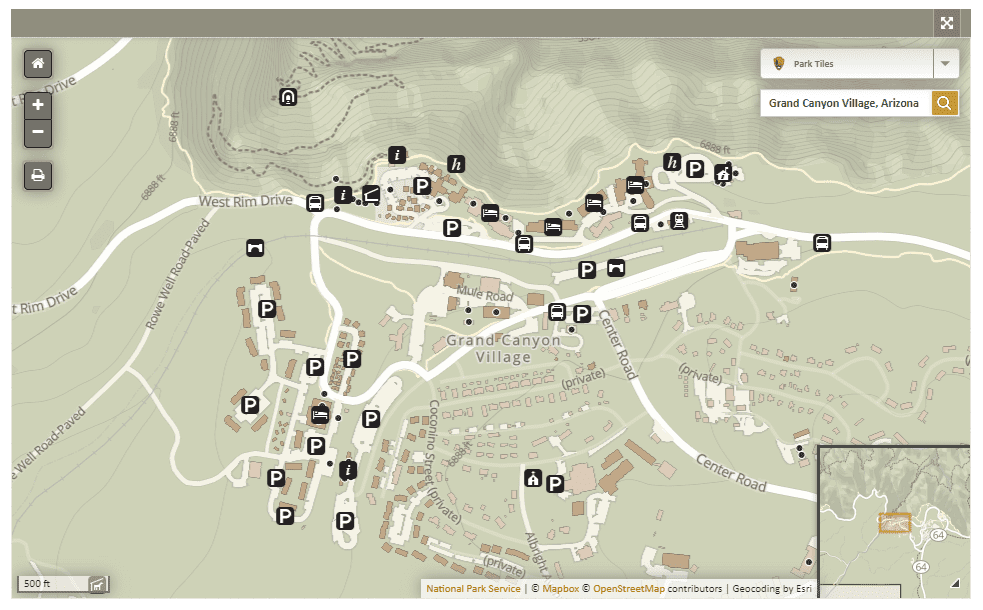
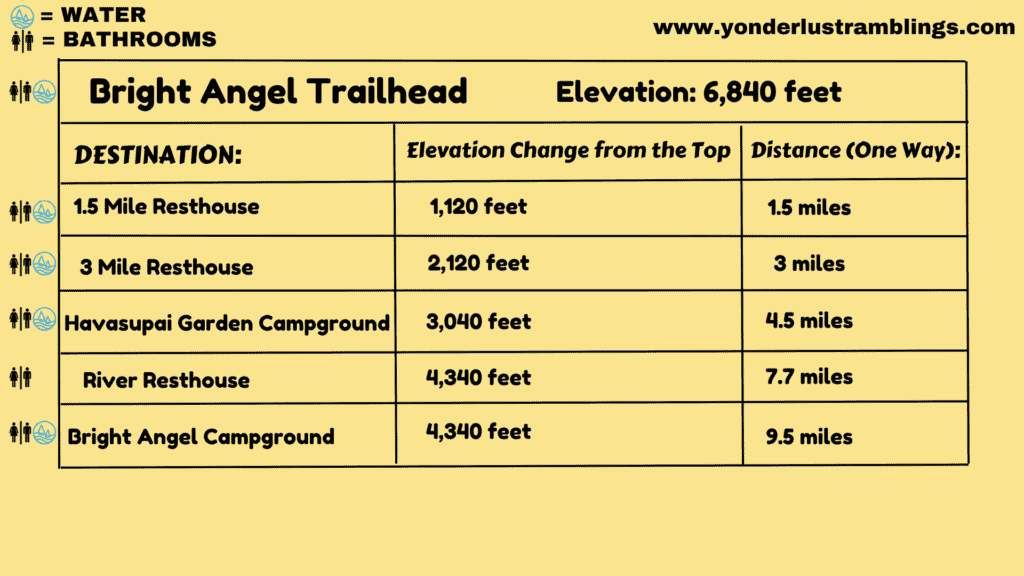
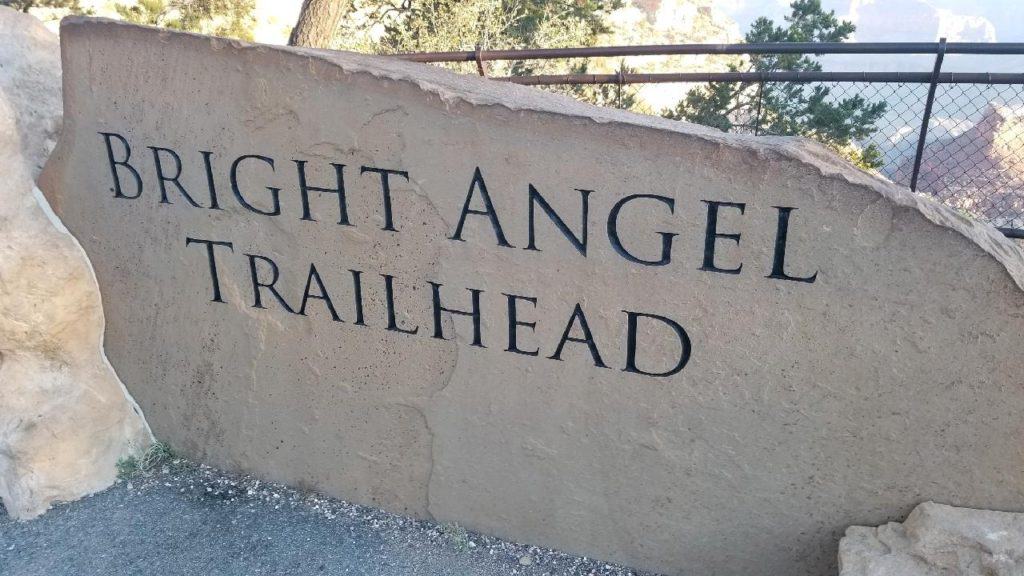
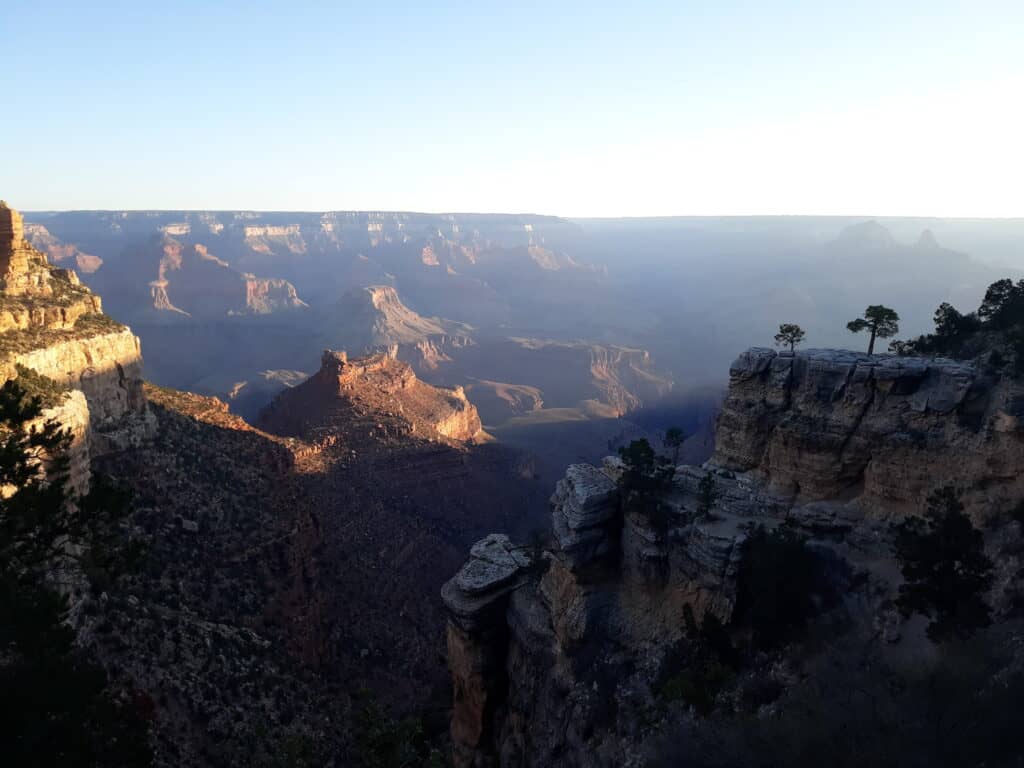
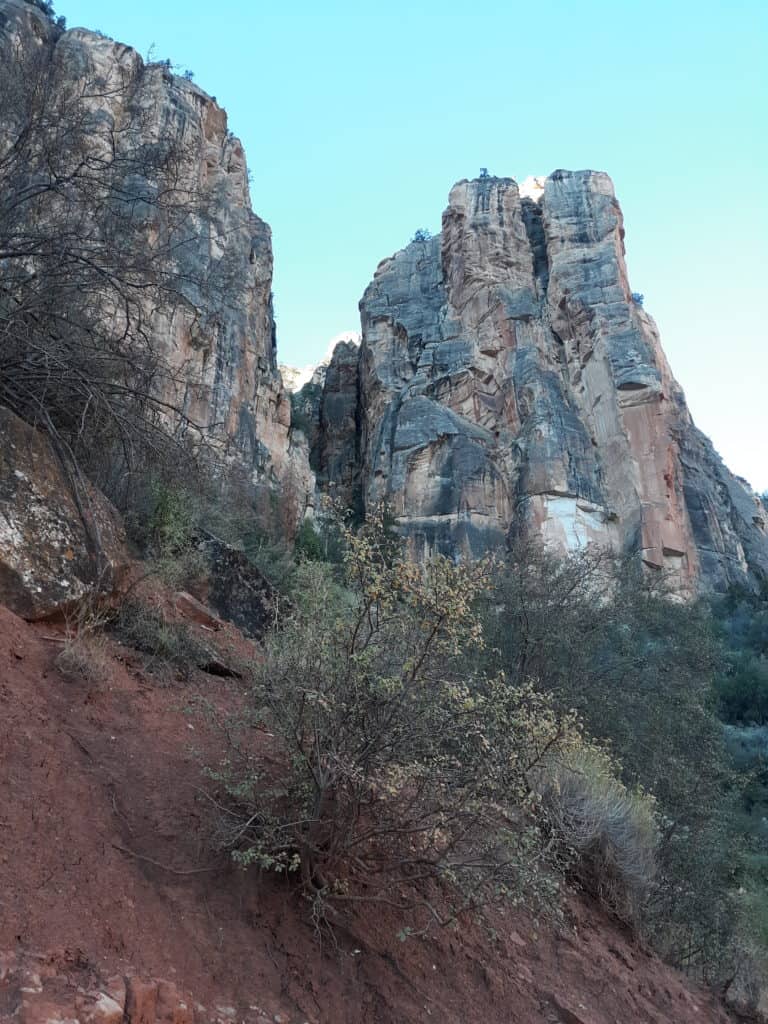
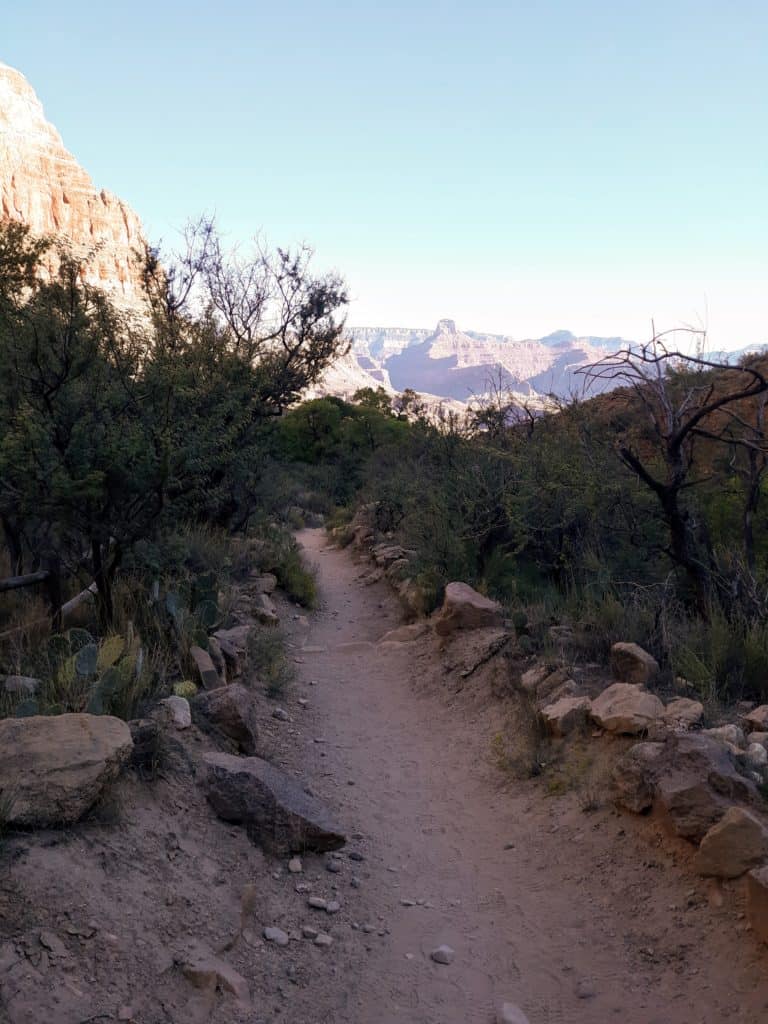

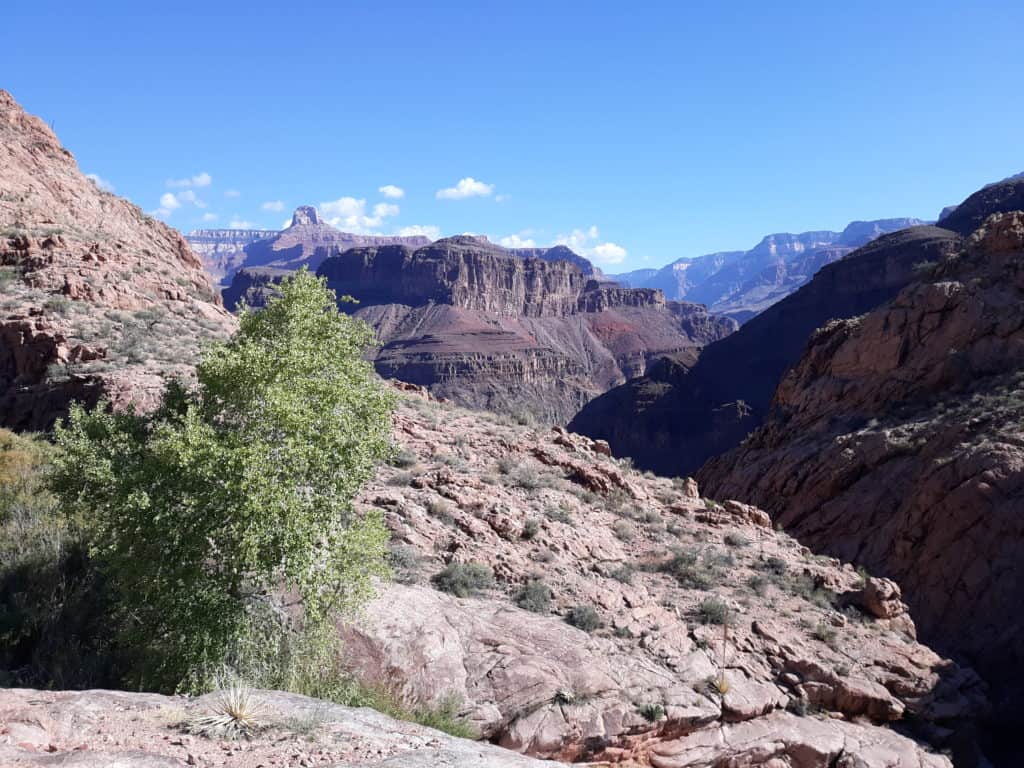
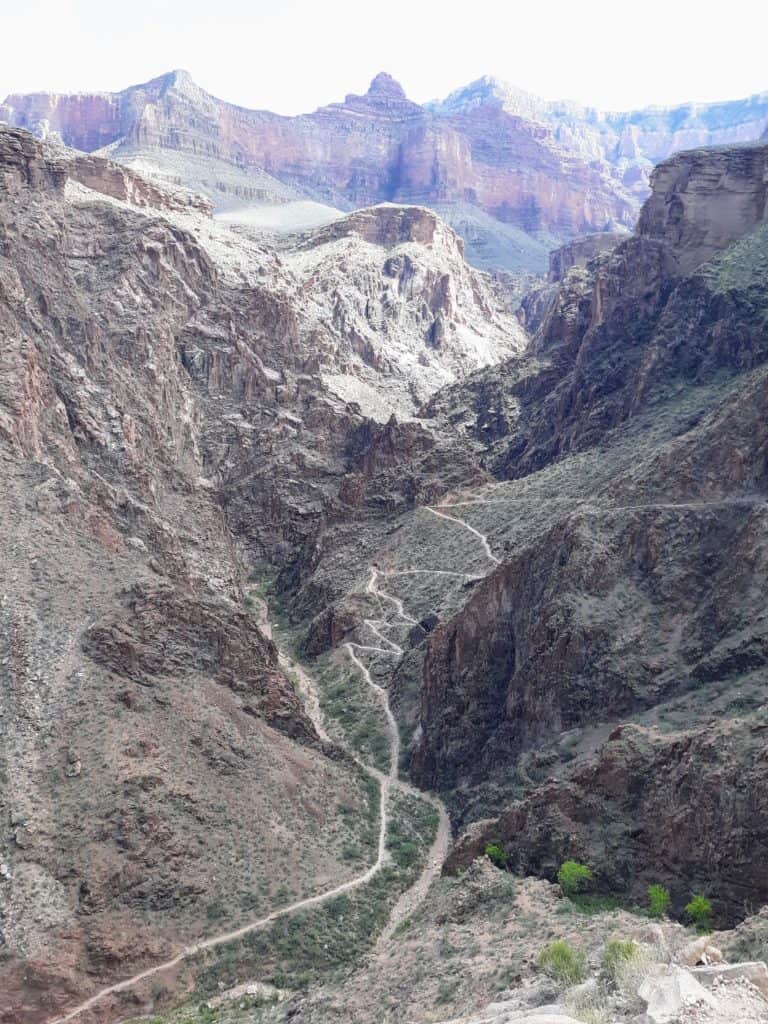
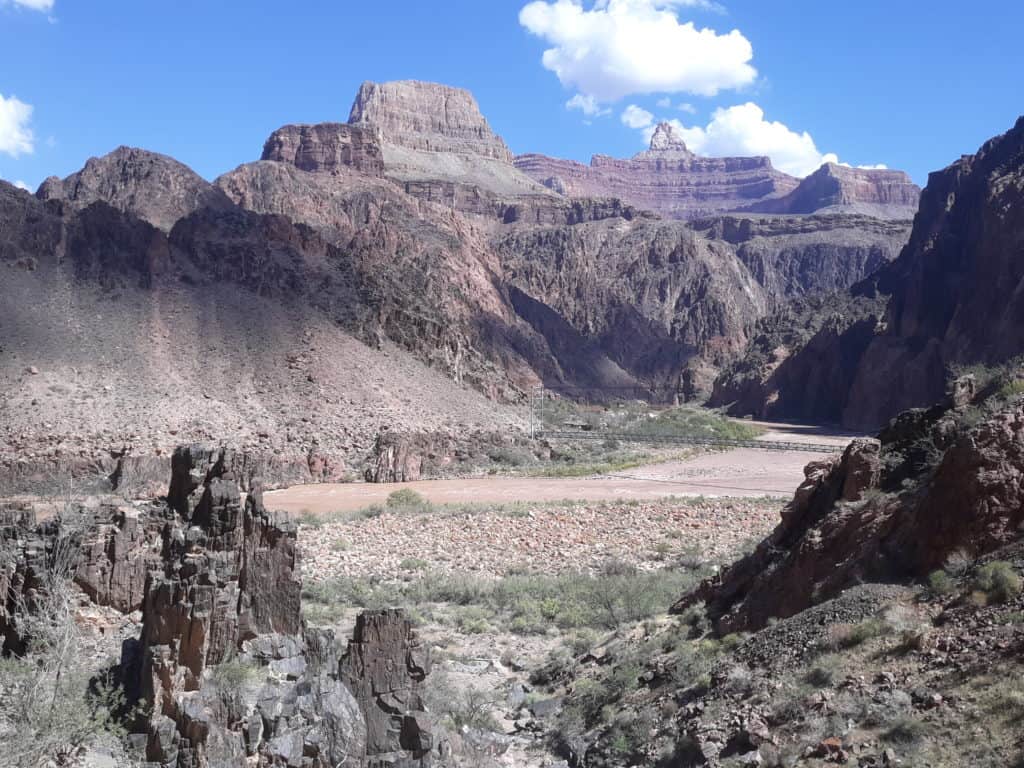
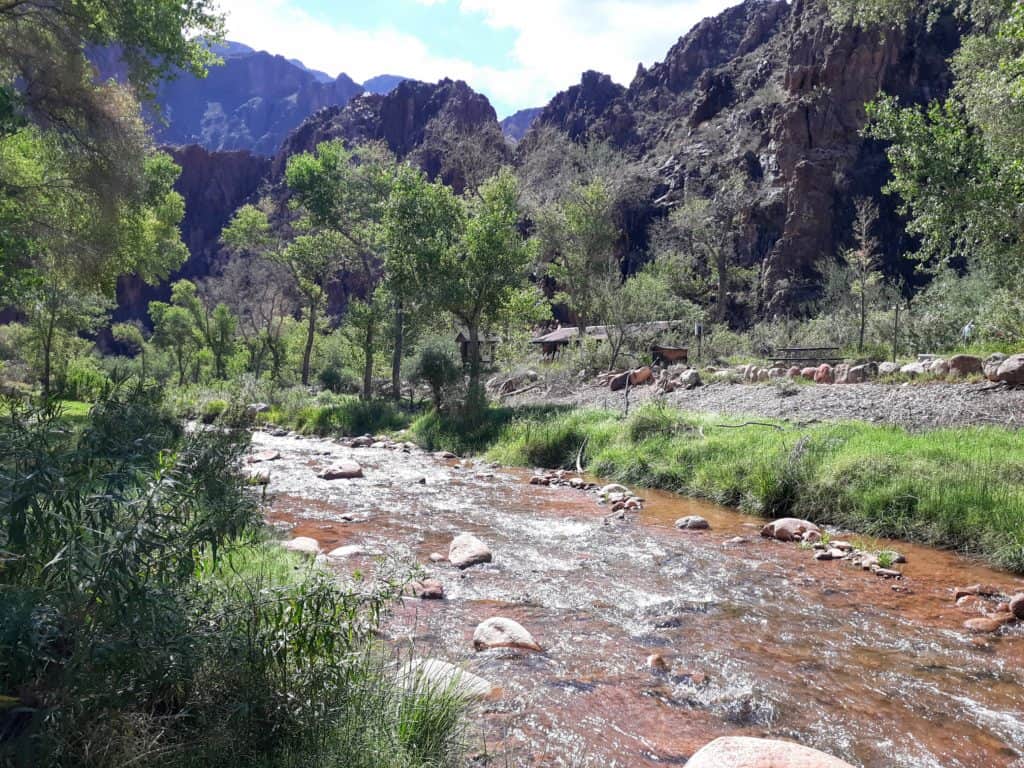
#2: South Kaibab Trail
The South Kaibab Trail is the South Rim sister trail to the Bright Angel Trail. While they share several similarities, there are also some big differences, which often poses a bit of a conundrum for those debating which South Rim corridor trail to take. Here’s some of the pros and cons of the South Kaibab Trail vs the Bright Angel Trail.
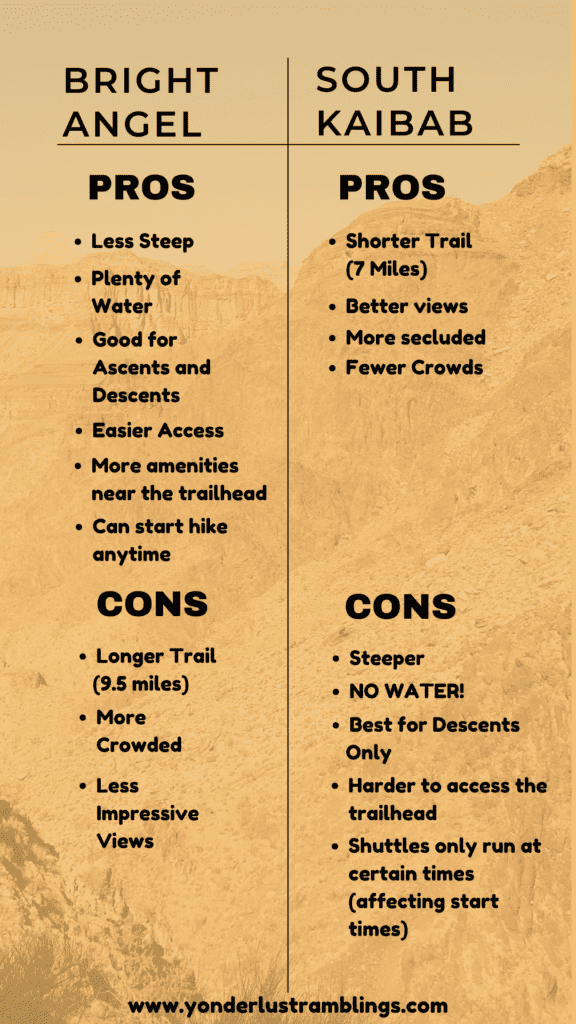
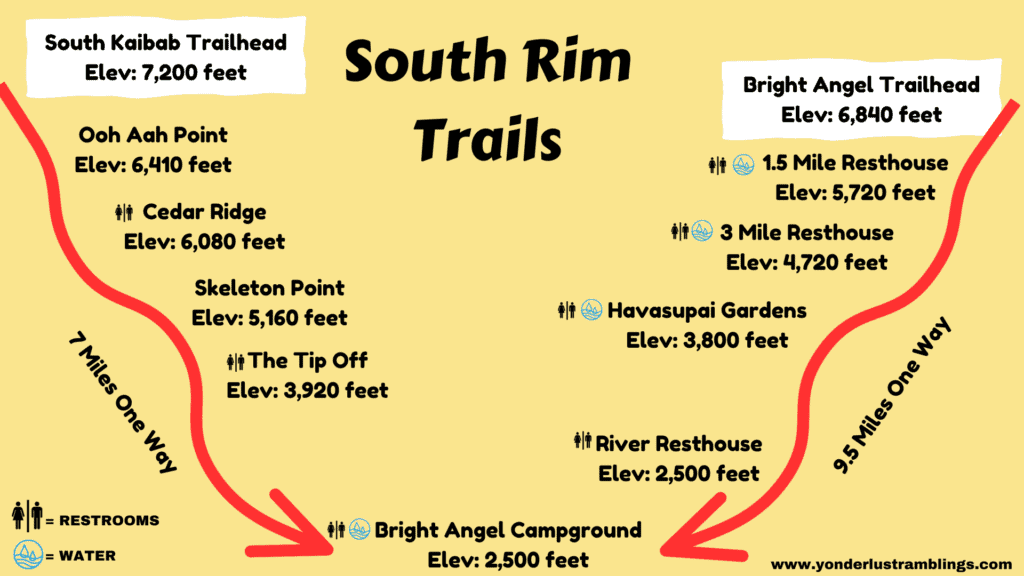
As you can see, the South Kaibab Trail has a lot of good things going for it. It’s got the best views, it’s a little shorter, and it’s generally less trafficked. But, you can’t park and leave your car at the trailhead, which means another logistic to figure out. You can take the free park shuttle’s Orange Line to the trailhead, but there are set times for departures from Grand Canyon Village. You can arrange a personal drop off from a friend or taxi if possible. That extra logistic though, is what tends to make the South Kaibab Trail less trafficked, if that is what you are after.
Other things to be aware of are that there is NO water on the South Kaibab Trail, which can be a big deal depending on how long you are planning to hike, or what season. Because of this factor, it’s generally not recommended to ascend the South Kaibab Trail, especially in the summer. So if you are planning a Rim to Rim hike from North to South, it is generally recommended to ascend via the Bright Angel Trail and NOT South Kaibab. Or if you are planning a Rim to River hike down and up the South Rim, the recommended route is down the South Kaibab Trail, and up the Bright Angel Trail, so you can take advantage of the water availability during the later, harder, and potentially harder part of the hike.
Here’s the breakdown for the South Kaibab Trail:
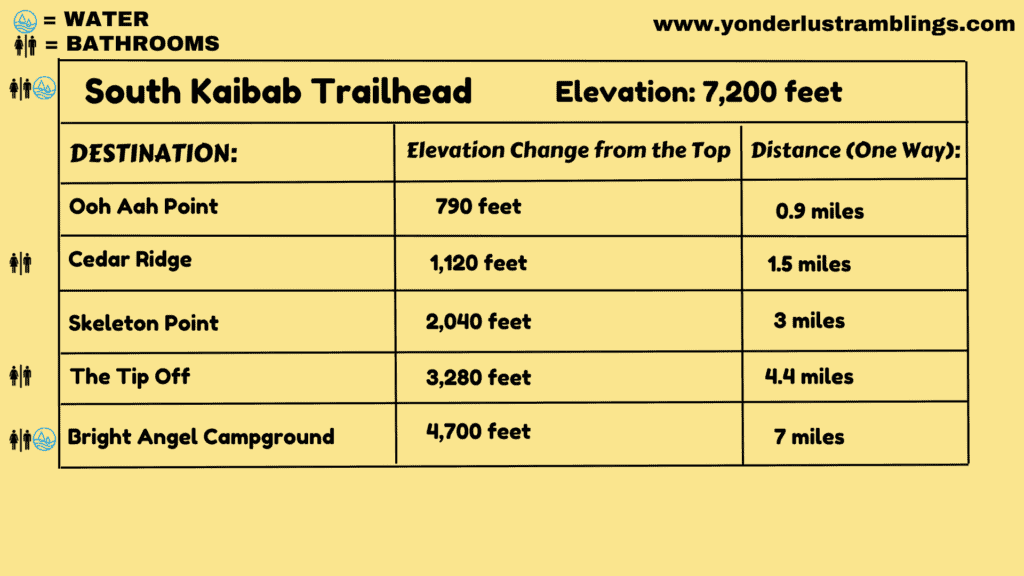
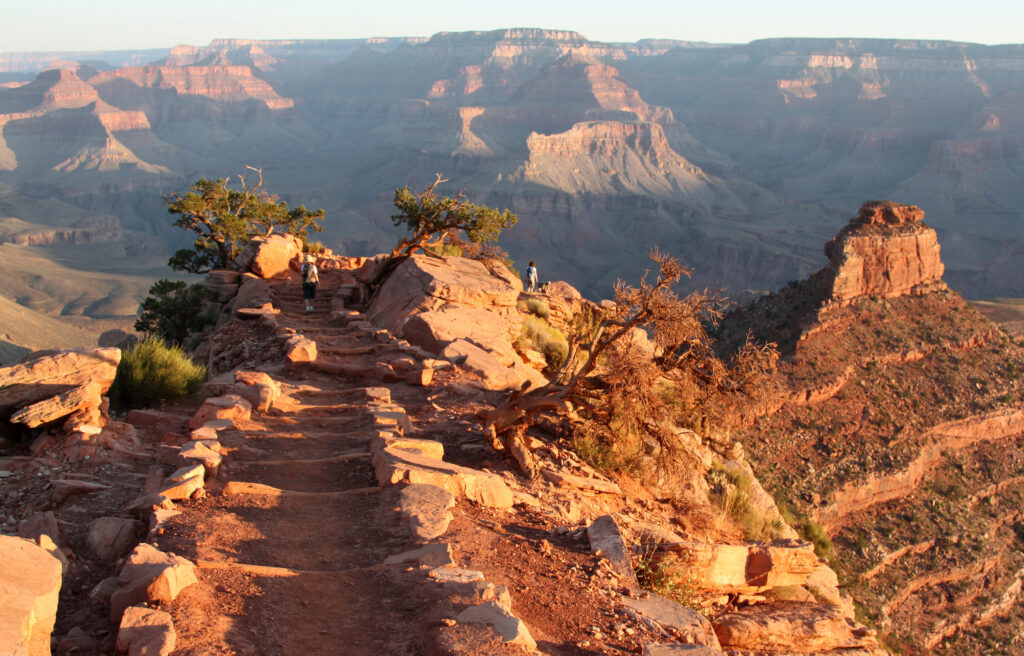
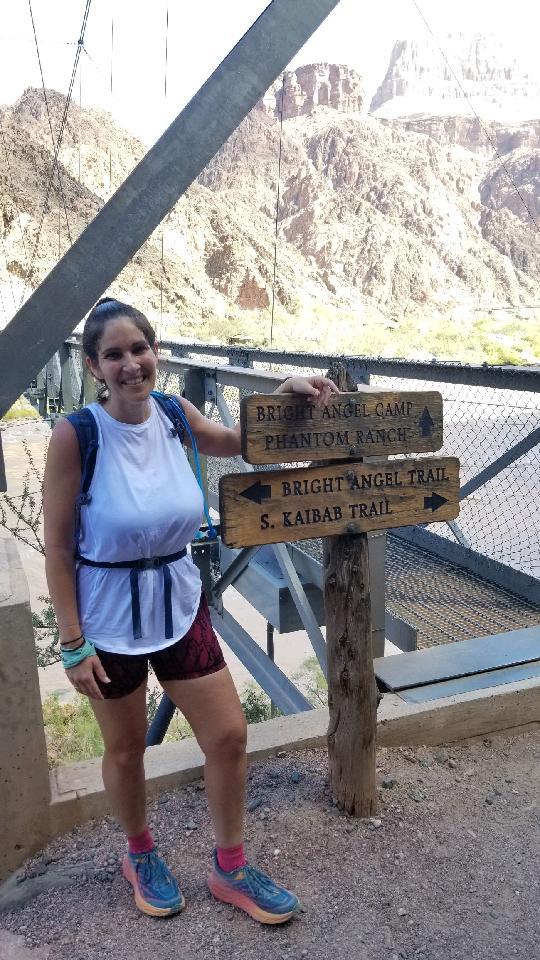
#3: The North Kaibab Trail
The North Kaibab Trail is the North Rim’s lone representative of inner corridor trails, but it is a standout nonetheless! The North Rim is starkly different than the South Rim, which is why it is so beloved by locals and those able to make the extra trek to this more remote rim.
How is the North Rim different from the South Rim?
- It is more forested
- It is more remote (farther from major cities and airports)
- It is less busy
- There is less infrastructure (fewer hotels/lodges, restaurants, shopping, etc).
- It is higher in elevation with cooler weather (even in summer)
Hiking the North Kaibab Trail is the perfect way to sample the best of North Rim hiking. You will find a quieter trailhead, draped in beautiful aspen trees and towering ponderosa pines. The trail plunges deep through the crimson canyon walls, passing a surprising amount of streams, creeks, and even a waterfall – Ribbon Falls!
The North Kaibab Trail is the longest of the 3 inner corridor trails in Grand Canyon National Park, and while the South Rim counterparts of Bright Angel and South Kaibab can realistically be hiked in their entirety within one day, the North Kaibab Trail’s 28 roundtrip miles is best broken up as a multi day hike, or hiked in conjunction with a South Rim corridor trail on a Rim to Rim hike.
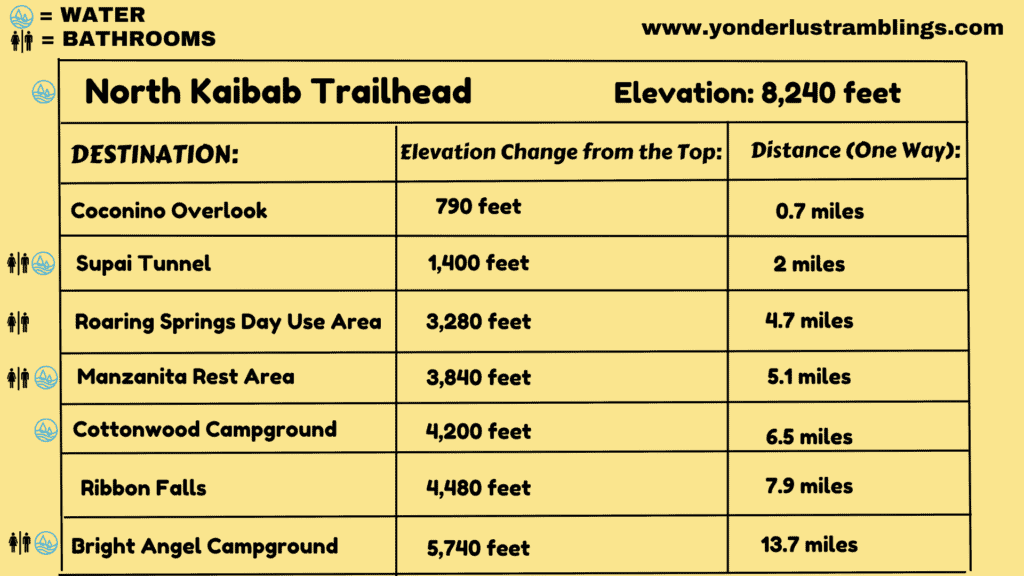
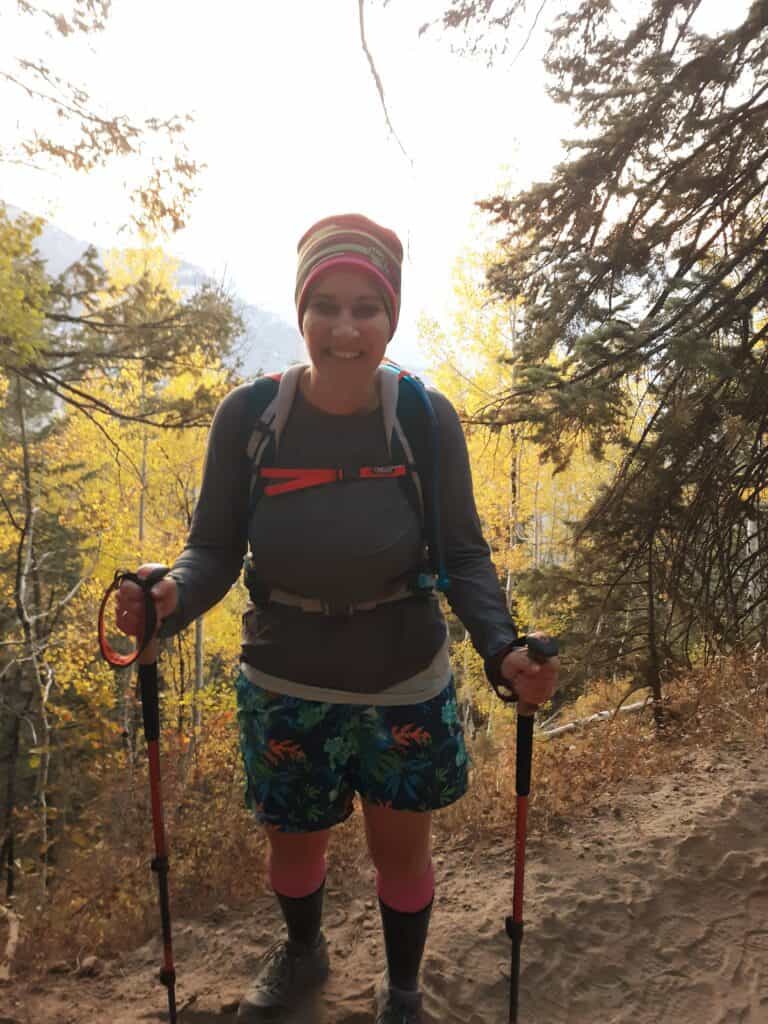



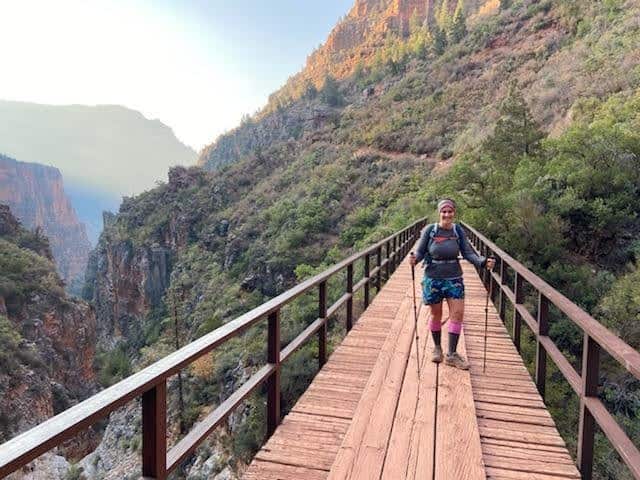
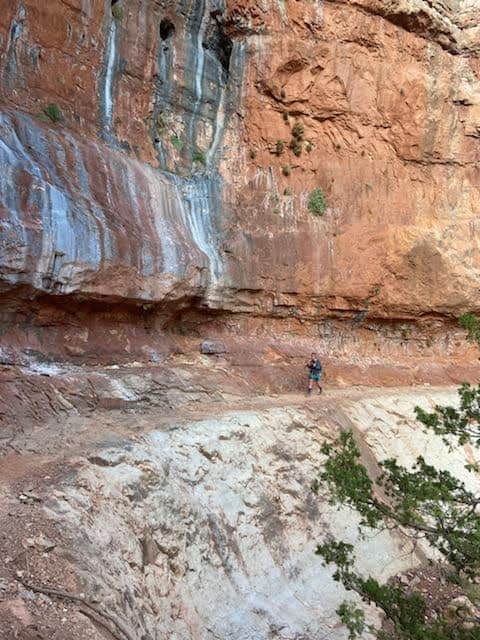
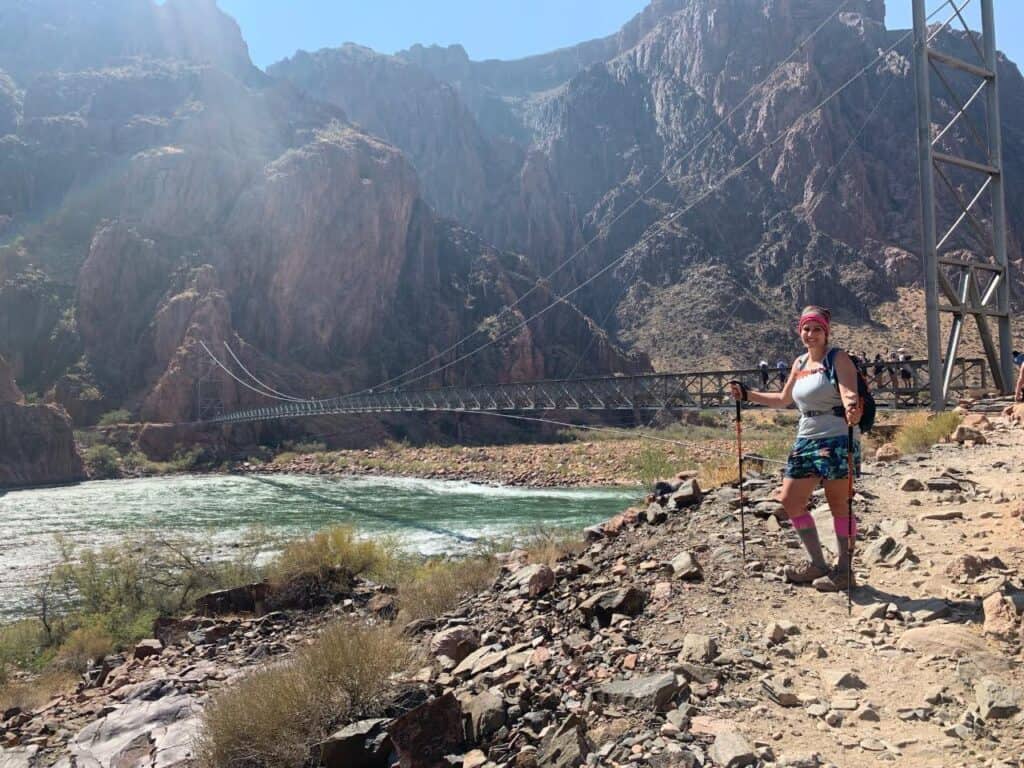
Common Inner Corridor Trail Combinations
Again, here are the two most common inner corridor trail combinations in the Grand Canyon: a Rim to Rim hike and a Rim to River hike.
Here’s the Rim to Rim overview again:


These are not hikes you just show up and do on a whim! These are hikes that land on the lists of toughest hikes in the U.S. consistently! And for good reason:
- Significant elevation gains of over 4,000 – 6,000 + feet
- Potentials for extreme temperatures of 120 degrees in the inner canyon
- Hefty distances (think minimum of 15 miles, maximum of 23.5 miles roundtrip)
- Dicey environmental factors like minimal shade, limited water availability, and precarious cliffs
- Necessity for essential gear, effective snacks, plenty of water, and lots of trail knowledge!
- Required level of physical training beforehand!
Yes, these combinations should be undertaken only after months of proper training before hand and a complete inventory of essential gear. Curious what a typical training plan looks like? Check out my complete Rim to Rim training plan! Want to know what gear is essential? Use this Grand Canyon packing list!
What Gear Do I Need to Hike Inner Corridor Trails in the Grand Canyon?
You can use the packing list above for an exhaustive list, but here are a few basics you shouldn’t step on trail without!
- Footwear – these are well maintained, non technical trails. I recommend trail runners like my HOKA One One Speedgoats for the extra cushioning to keep your feet feeling fresh on these longer corridor trails
- Daypack (or Backpack if Overnight Camping) – my daypacks need to be water bladder compatible (my preferred hydration system), big enough for all my day hiking gear, plus comfortable for all day wear. My recommendation is the Camelbak Helena 20 L daypack.
- Hydration System – have a primary system capable of at least 3 liters, and a secondary backup system for emergencies that can filter. My primary system is this Platypus Water Hydration Bladder, and my backup system is the Katadyn BeFree collapsible water bottle with internal filter.
- Environmental Protection – cooling towels, (or a cotton tank / shirt that can double as a cooling towel when dipped in streams) sunscreen, sunglasses, hat, Chapstick, etc.
- Layers – you CAN wear cotton in the canyon – see above – (one of the few environments where it works to your benefit, especially if you plan to dip your cotton layers in the stream). I recommend non chafing shorts (bonus for pockets), anti blister socks like these Hilly Twin Skins, and a lightweight outer layer if you are concerned about the colder temperatures in the mornings.
- Emergency Gear – an SOL bivy is great for unexpected emergencies, as well as a mirror/signaling whistle combo, a backup water filter (see above), and a hiking first aid kit.
- Hiking Snacks – a few of my favorites are sandwiches, squeezable applesauce pouches and peanut butter packets, beef jerky, trail mix, carrots and apple slices, tuna packets, Honey Stinger Waffles, RX bars, and energy gels. Don’t forget electrolytes like NUUN tablets and / or salt tablets for sodium replenishment.
- Navigation Tools – an app with downloadable / offline map capabilities or something similar that you are familiar with using, and a portable battery for your cell phone.
- Trekking Poles (if preferred) – these Black Diamonds are the best, and I love the cork handles that prevent slippage from sweaty hands that some rubber and plastic handles do.
*if you are specifically hiking a Rim to Rim, use this packing checklist!
What if I Don’t Want to Hike the Whole Thing?
The great thing about EACH of these 3 inner corridor trails in the Grand Canyon is that they can all be shortened, thanks to superb “turnaround” spots along each trail. Below are recommended “turnaround” spots on each inner corridor trail:
Bright Angel Trail:
- Trailhead to 1.5 Mile Resthouse – 3 miles total roundtrip
- Trailhead to 3 Mile Resthouse – 6 miles total roundtrip
- Trailhead to Havasupai Garden Campground – 9 miles total roundtrip
South Kaibab Trail:
- Trailhead to Ooh Aah Point: 1.8 miles total roundtrip
- Trailhead to Cedar Ridge: 3 miles total roundtrip
- Trailhead to Skeleton Point: 6 miles total roundtrip
- Trailhead to the Tip Off: 8.8 miles total roundtrip
North Kaibab Trail:
- Trailhead to Coconino Overlook: 1.4 miles total roundtrip
- Trailhead to Supai Tunnel: 4 miles total roundtrip
- Trailhead to Roaring Springs Day Use Area: 9.4 miles total roundtrip
- Trailhead to Manzanita Rest Area: 10.2 miles total roundtrip
- Trailhead to Cottonwood Campground: 13 miles total roundtrip
- Trailhead to Ribbon Falls: 15.8 miles total roundtrip
Can I Camp Along the 3 Inner Corridor Trails in Grand Canyon National Park?
Yes, but campground permits / reservations go quick (all accommodations tend to book quick and fill up in the Grand Canyon! There are 3 campgrounds and 1 lodge along the 3 inner corridor trails in the Grand Canyon:
- Havasupai Garden Campground (mid way down the Bright Angel Trail)
- Bright Angel Campground (at the end of the North Kaibab Trail)
- Cottonwood Campground (mid way down the North Kaibab Trail)
- Phantom Ranch (at the bottom of the Grand Canyon and junction of the 3 corridor trails)
*Note that Phantom Ranch is reserved via a lottery system!
If you are planning to tackle any of these Grand Canyon inner corridor trails as an overnight hike, make sure to check out this backpacking guide prior to get all the right gear.
And there you have it, now you are an official expert on all things involving the 3 inner corridor trails in Grand Canyon National Park!
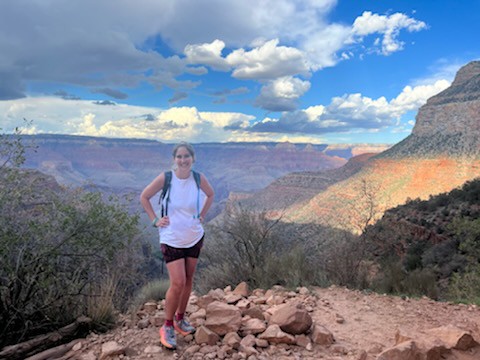
WHAT’S NEXT?
Interested in pursuing a Rim to Rim hike or Rim to River hike? Check out my additional resources below, or book a personal coaching consult or individualized training plan with me personally by filling out this INTEREST FORM!
Related Resources:
- First Timer’s Guide to Hiking Rim to Rim in One Day
- How to Hike Rim to River in the Grand Canyon
- Complete Rim to Rim Training Plan
- Complete Rim to Rim Packing List
- Essential Gear for Grand Canyon Trails
- South Kaibab Trail vs Bright Angel Trail
- Guide to Hiking the North Kaibab Trail in the Grand Canyon
- Backpacking for Beginners Step by Step Guide
What About Other Trails in the Grand Canyon?
- The 12 Best Day Hikes in Grand Canyon National Park
- The 13 Best Easy Hikes in Grand Canyon National Park
- Guide to the Widforss Trail on the North Rim of Grand Canyon
PIN for LATER!

